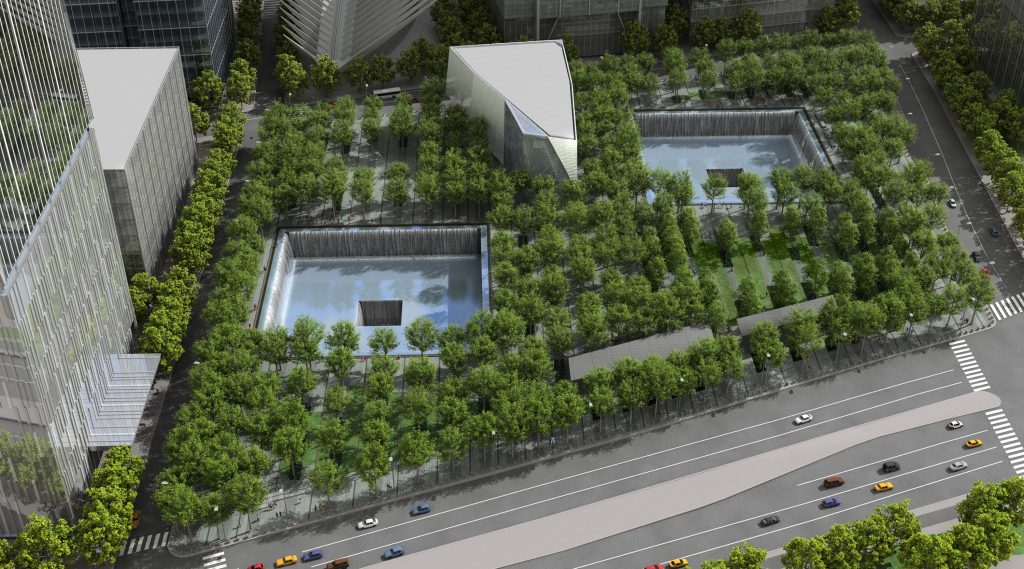How buildings and structures influence the society and why digital solutions play a crucial role
What do the Eiffel Tower in Paris, the Parthenon in Athens and the Burj Khalifa in Dubai have in common? They are iconic buildings, heritage sites and among the most visited places in the world.
The two towers of the World Trade Centre in New York are also on the list of iconic buildings. The images of the burning twin towers on 11 September 2001, have become indelible in our collective memory: no building symbolised Western capitalism and globalisation so vividly.
These four examples show that buildings are much more than piled-up stones, concrete, steel, wood or glass. They surround us permanently and determine our everyday life and our perception. However, only a few professional groups are usually involved in their design: architects, urban planners and engineers.
Digital solutions, open interfaces and true collaboration
Architecture in particular, which was already considered the “mother of all arts” in antiquity and was supposed to be based on the three principles of stability, utility and beauty.
Today, architects often take on the role of mediator – between the various trades before, during and after the construction process. But it is not only architects who are now looking at a changed role within the construction process; engineers, general contractors and suppliers are also expected to cooperate more – and coordinate with each other, especially as the complexity of projects rises.
Digital solutions, open interfaces and true collaboration are essential. With the help of software, models can be modelled, reviewed and revised more accurately and quickly. This leads to more information, more true collaboration and real value derived from a closer collaboration.
All stakeholders in the building lifecycle are spending more and more time as information managers and organising, structuring and interpreting this information.
Artificial intelligence (AI) and machine learning (ML) are proving to be powerful tools to further maximise the value and potential of data and make timely decisions faster – with positive implications for the entire AEC/O industry.
Benefitting from innovative software
In the planning and design phase of buildings, architects and engineers are already benefitting from innovative software tools that help identify rule-based clashes between models, create accurate construction simulations and schedules, and increase the efficiency of the design phase.
During construction, project managers and site personnel need to make the best use of available resources. Combined with monitoring data from construction sites, patterns that lead to problems can be identified.
Project managers can take corrective action faster – even before problems become critical. Scheduling deliveries to the jobsite and procuring materials can be significantly improved through more efficient routing, loading and inventory management using AI.
While efficiency is the main driver for AI in the construction industry, there is now an increased focus on end-user requirements and the desire for more sustainable buildings. Once a project is complete, AI provides additional benefits throughout the facility’s operation.
Sophisticated building management systems that integrate information from internet-connected sensors and other data collection devices are quickly becoming commonplace.

Buildings that shape the world
Creating buildings that shape the world is quite a task and only in the last few decades have stakeholders been able to rely on digital solutions. Think of the Eiffel Tower in Paris, created more than 250 years ago. For its part, the “metal monster” was considered highly controversial – and ugly.
Today, the Eiffel Tower is the symbol of France, one of the city’s landmarks and one of the most visited buildings in the world; more than 250m people have visited the “metal monster” since its opening in 1889. The Eiffel Tower has managed to survive the debates about its shape – and today the fear that it would disfigure the cityscape seems almost absurd.
But sometimes it is the absence of buildings that brings different cultures and walks of life closer together. When two planes crashed into the twin towers of the World Trade Centre on 11 September 2001 and they collapsed as a result, it didn’t just hit the US; it shook the entire world.
An attack in the heart of the city that reflects globalisation, cultural diversity and international community like no other shook everyone around the globe. The two holes that the collapse tore in the skyline’s silhouette were not filled. Instead, an architect developed a remarkable place of remembrance – leveraging digital solutions that simulated the scenery.
Digital solutions today are an essential part of the creation, construction and management of buildings and structures. But the result is much more than the planned arrangement of materials. Buildings reflect our relationships with one another, and their basic requirements have remained unchanged over the decades. Buildings must assume a responsibility for us as a society that extends into the future and therefore goes hand-in-hand with the idea of sustainability – helping us shape our world.
Ulrike Beringer
Director Corporate Communication & CSR
*Please note: This is a contributor profile

















